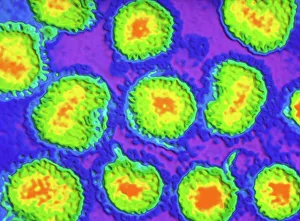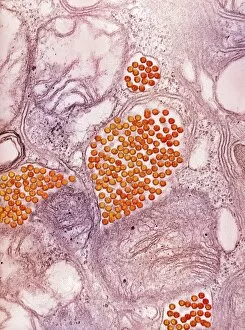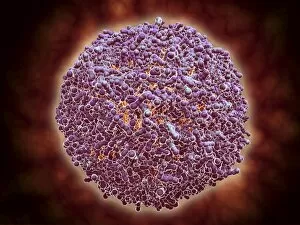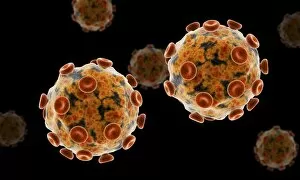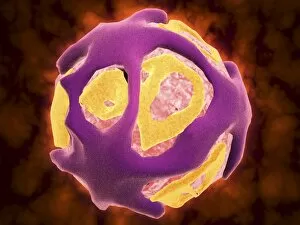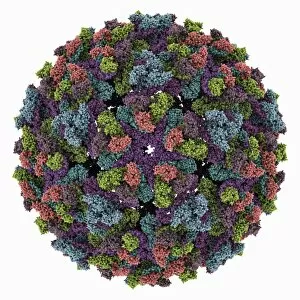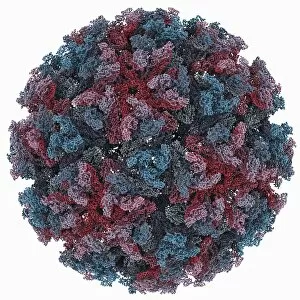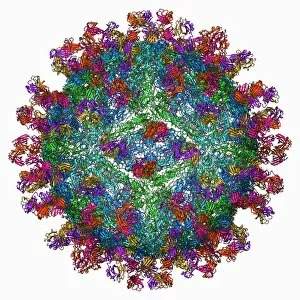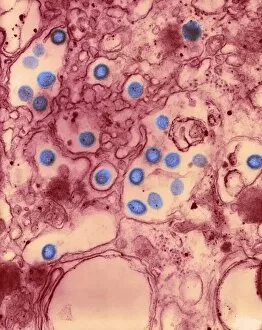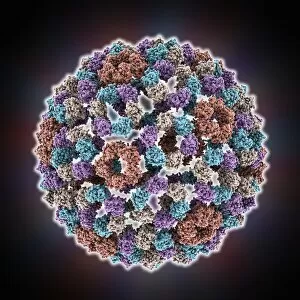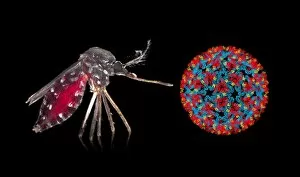Arbovirus Collection
Arboviruses, or arthropod-borne viruses, are a diverse group of pathogens that pose significant threats to human and animal health worldwide
All Professionally Made to Order for Quick Shipping
Arboviruses, or arthropod-borne viruses, are a diverse group of pathogens that pose significant threats to human and animal health worldwide. This captivating image showcases the intricate beauty of bunyaviruses under a colored transmission electron microscope (TEM). Among these arboviruses is the Eastern equine encephalitis virus, depicted here in stunning detail using TEM. Its presence can lead to severe neurological diseases in both humans and horses. Another microscopic view reveals the Sindbis virus, displaying its unique structure and complexity. This arbovirus primarily affects birds but can also infect humans, causing symptoms such as fever and joint pain. The conceptual images of Zika virus emphasize its global impact on public health. With its distinctive shape resembling an abstract artwork, this notorious arbovirus has been linked to devastating birth defects like microcephaly. Dengue virus is another formidable member of the arbovirus family. Its molecular model showcases the intricacies of its capsid - a protective shell surrounding its genetic material. Dengue fever poses a significant threat in tropical regions worldwide. Chikungunya virus captivates with its striking capsid design shown here. This mosquito-borne pathogen causes debilitating joint pain and high fevers in infected individuals. Semliki forest virus presents itself with an intriguing capsid structure that contributes to its ability to cause encephalitis in humans and animals alike. These captivating images highlight just some examples from the vast array of arboviruses that exist globally. Their complex structures not only fascinate scientists but also remind us of their potential for causing widespread disease outbreaks if left unchecked.

